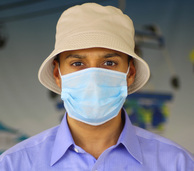|
Located on the junction of Nathan Road and Salisbury Road, The Peninsula Hong Kong is comfortably the most recognised hotel in Hong Kong. Its trademark 32-storey glorious cream-coloured building is visible from all elevated parts of the city (including from the Peak, and from the new ICC building), and if you are bit higher then you get a clear glimpse of the two signature helipads on the top of the hotel as well.
The Peninsula Hong Kong is the glamorous flagship property of The Hongkong and Shanghai Hotels, Limited. It presents the ultimate in luxury, and apart from being the only historically luxurious five-star quality hotel in Hong Kong, The Peninsula Hong Kong is very much seen as a reminiscent of the British colonial days of Hong Kong. Though it looks smaller from the outside, the interior, however, does reveal a rather grandular ambiance where lavish space dominates all throughout. One thing is for sure, when it comes to having that perfection of customer service, comfortable rooms, and exceedingly good food; there is no comparison to this nostalgic property. Usually when one mentions the words, The Peninsula Hong Kong, most people just have one thing in mind- ‘The Peninsula Afternoon Tea’, which has its roots cemented from Hong Kong’s old colonial days. In fact, the lavish hotel is much more than that, and effectively gives more to its guests in return. Yes, The Peninsula Hong Kong is renowned for its delicious food, its high quality of comfort, and its excellent customer service. However, there is one thing that people tend to brush off without even realising it- The Peninsula Hotel has one of the oldest fashion arcades in Hong Kong. Throughout the years, the hotel has hosted world-renowned brands such as Chanel, Dior, Gucci, Prada, Louis Vuitton, Cartier, and many others. There’s also a branch of the famous Graff Jewellers. All 300 richly decorated rooms and suites have a lovely blend of the colonial past, and the ultra modern touch with state-of-the-art facilities throughout. This includes luxuries such as electronic curtains and blinds, DVD players, complimentary internet (wired and wireless), complimentary local calls, and, sophisticated touch button technology that allows you to control all the room lights from your bedside (so you don’t have to get up from your bed). Oversized marble bathrooms feature separate showers and tubs (Jacuzzi in the Peninsula Suites), built-in LCD TVs, hands-free phones, and complimentary toiletries by provided exclusively by Davi. Guests residing at The Peninsula Hong Kong are also presented with a lovely red Chinese soap box in which there is a complimentary round Davi soap bar with the signature of the Peninsula crest stamped on it. The whole ambiance of the hotel projects a strong sense of the old British colonial era. Some parts of the premises, such as the corridors, the lobby, and the Verandah really does give you a feeling that you are back in the 1930s colonial Hong Kong. Except, of course, the only difference being that you don’t see guests wearing period clothing. As everyone who works in the hospitality business knows that it only takes one chance to make a lasting impression, and the reason why the vast majority of the guests keep coming back to The Peninsula Hong Kong is because every single member of the hotel makes a very good lasting impression. It’s the ethos that has been built and maintained by Sir Michael Kadoorie, Chairman, The Hongkong and Shanghai Hotels, Limited. The true heydays of The Peninsula Hong Kong were when the Kadoorie family initially opened it in 1928. In those days, passengers from the luxury cruise ships used to disembark at the Kowloon quay, and, the famous trans-Siberian rail link from mainland China would stop right in front of the hotel, which enabled people to go straight to the Peninsula to have the signature Afternoon Tea. Though, with the change of the times, the train is not there anymore, nevertheless, the traditional ceremony of having Afternoon Tea is still very much part of the culture and ethos of The Peninsula Hong Kong. The luxurious Rolls-Royce cars, and the helicopter rides are two of the other key ingredients that have distinguished The Peninsula Hong Kong for many years and will continue to do so in the foreseeable future. Since December 2006, the hotel has had a fleet of 14 Rolls-Royce Phantoms painted in the hotel's signature ‘Peninsula green’. This was the largest order placed for Rolls-Royce in the history of the company, and still stands as of today. The Peninsula Hong Kong is the only hotel in Hong Kong where the helicopter can land. The two helipads are used primarily for sigh-seeing rides over Hong Kong, or to transport the hotel's VIP clients to Hong Kong International Airport, with flight duration being around 10 minutes. The China Clipper aviation lounge is located on the 30th floor, and allows passengers to freshen up before or after their helicopter flight. The toilets in the lounge are originals from an actual aircraft. The lounge has parts of the ‘China Clipper’ aircraft, a four-engine seaplane belonging to Pan American Airways that was used on the inaugural flight from San Francisco to Manila in November 1935 (it stopped en-route and landed at the former Kai Tak airport). The Peninsula brand in Hong Kong is so strong and powerful that there really is no room for failure. From the moment you step into the hotel premises to the moment you check-out, everything is done to the absolute perfection with the minute detail in mind, everything. That smoothness with which the Rolls-Royce is driven at, that signature smile from the crisply attired Peninsula Pageboy when he opens the door to welcome you, and that sheer effectiveness of the housekeeping maids to make sure that you have the luxurious experience of a lifetime. During my brief stay I got the feeling that the entire staff have a sense of strong attachment to the history of the hotel, and they are not just there because they have a job to do. Indeed, some of the staff are so closely part of the Peninsula family that have been at the hotel for almost their entire life. A beautiful illustration of this is provided in a new book called ‘Our Hong Kong’, which is a collection of personal stories from the staff at the Peninsula. The limited edition hardback is given as a complimentary gift to all guests who stay at this hotel. As Ms. Rainy Chan, the Area Vice President - Hong Kong and Thailand General Manager, The Peninsula Hong Kong puts it: ‘Our Hong Kong offers a highly privileged view- like a city guide created by 50 of your local friends, with antidotes and insights that are rich and varied’. The Peninsula Hong Kong provides six dining venues (eleven including the Lobby, Room service, The Verandah, The Pool Terrace, and The Bar), which means you have no excuse to miss your friend’s invitation. There are many highlights, and it would probably take a book to write about them all. If time is your enemy then it may be worthwhile to check out the Philippe Starck-designed Felix restaurant and bar, the Verandha (which still has the old colonial Raj style fans), and the Salon de Ning which is located in the basement floor (just like at The Peninsula Shanghai). The latter features live band with dancing and cocktails. There is no other better way to polish off your nostalgic experience at The Peninsula Hong Kong than to pamper yourself with one of the signature massage treatments at The Peninsula Spa by ESPA, or relax at the swimming pool overlooking the Victoria Harbour. Equally beautiful are the roman bath style sauna and Jacuzzi facilities that are offered in the separate men’s and ladies changing rooms. As you swim you can either admire the beautiful views of the Hong Kong Island’s unmistakable skyline, or just while away your time in the vicinity of the thought that you have been part of a bit of Hong Kong’s proud, and prosperous history. Try it yourself, and see what the Grande Dame of the Far East has in store for you. Who doesn't love Hong Kong? This tiny city is full of magic, noise, sights, and plenty of fan-fare 24 hours a day. In the past 3 months, I have had the pleasure of visiting Hong Kong a number of times. The great thing about Hong Kong is that no matter how many times you go, it’s very difficult to resist the temptation to take some photos. Here are a few shots of Hong Kong I have taken from various places. I hope that you can enjoy these photos no matter where you are in the world. One thing I’ll say is that no matter how much of an experienced hiker you may be, Hong Kong (and its unpredictable weather) will most certainly challenge you. After a long day of walking around on a hot and humid day, it feels exceedingly exhausting. Who needs to go to the desert or to a sauna when you are in Hong Kong?! For a number of times I actually felt as if I had been to the gym in my suit! (You know that feeling of wearing a suit and tie in extreme hot and humid weather?!). Anyways, enjoy feasting your eyes with these photos!
When one stands at the Ozone Bar at the 118th floor of The Ritz-Carlton, Hong Kong, which (if you don’t already know by now), is officially the highest watering hole in the world, at the highest hotel in the world, you get a true feeling of how tiny yet vibrant Hong Kong really is. During the day, everything looks like as if you are standing on top of a matchstick city, while during the night it looks like you are standing in the middle of a garden full of a billion Christmas trees twinkling in the far distance.
Opened on the 29th of March 2011, and occupying the top 17 floors of Hong Kong’s tallest building, the International Commerce Centre (ICC), The Ritz-Carlton, Hong Kong is your castle in the sky. The elevator that propels the guests to the arrival lobby at the 103rd floor takes exactly 53 seconds- that’s 9 metres per second to be precise. It’s not as fast as an aircraft taking off on rotation; nevertheless, it may still require you to swallow or even chew a candy to stop your ears popping. On a windy or rainy day, you can hear the wind whistling in the background as the lift goes up (or down). If you ever wanted to experience what life is like above the clouds, and what it feels like to sleep in the clouds, then you have come to the right place. In fact, it’s more than that. Call me mad, but during my brief stay, I could not resist just sitting in my room and watching how quickly the weather went past me and it’s so good that you can see the weather coming towards you from a distance of over 15-20 miles in the horizon. What I am trying to say is that if you were on the ground, you would probably think that it’s a clear day, and you would have no warning or idea that in, say, half an hour it will start raining. Whereas if you are at 1,500 feet above the ground in your cosy room at The Ritz-Carlton you can easily see that it’s raining 20 miles away, and that rain is heading right towards you. A beautiful experience that makes you feel as if you are floating gently on the cloud tops. All the 312 rooms and suites are designed to give you the ultimate in luxury and to make you feel special for whatever reason you are staying at The Ritz-Carlton, Hong Kong. Whether it is for business or pleasure. Unlike other hotels, the distinguished service at The Ritz-Carlton comes with the best customer experience, and effectively everything that has to be superlative- there is no room for failure when guests are paying around 5000HKD (approx. 450GBP) per night for the privilege. At that point, it comes to the important part, which is the experience received rather than the height of the hotel. The best part of the stay has to be the sleep. Lovely slumber and cosy 400-thread count bed linen with down feather pillows and throws (600-thread in the Club rooms and Suites). You just can’t beat the experience, and it’s so good that it makes you feel like you don’t want to get out of the bed. Exceeding expectations, the rooms all are fitted with state-of-the-art facilities such as electronic blinds and curtains, 42-inch LCD television (17-inch LCD television in the marble bathroom), Blu-ray DVD player, i-pod docking station, both wired and wireless high-speed internet service, and the all important- Nespresso coffee making machine. Oh, and then there is the useful bedside clock which has an automatic light that comes on only when you pick it up- so you don’t have to get out of your bed to switch on the lights. Sometimes, the latest high-tech gadgets used at The Ritz-Carlton, Hong Kong can even confuse the housekeeping staff. Like for example, the tiny ‘Do Not Disturb’ (DND) and ‘Please clean’ LED lights outside the doors that are neatly camouflaged inside a black glass panel. It’s a lovely invention that covers the minor but important details of what an experience should be like at a fine accommodation. All the Suites have a telescope that overlooks to the Victoria Harbour and beyond. The views are just fascinating. On a clear day you can get spectacular views with the naked eye for as far places as Lantau Island, Lamma Island, the shores beyond Stanley on the far side of Hong Kong Island, Sha Tin and, even Clear Water Bay. The old airport, Kai Tak, which closed down in 1997 after the British handover, is clearly visible with its runway (runway 31-13) and taxiway all intact even after all these years. In fact, airline pilots would who used to fly into Kai Tak would love The Ritz-Carlton. Standing at the Club Lounge and admiring the views is a treat because the view from the Club Lounge is the same (and from the same height of around 1,500 feet), at which planes would have started their final approach into Kai Tak. The old checkerboard in Kowloon is still very much visible along with Mongkok hill. I highly doubt that the guests residing at The Ritz-Carlton, Hong Kong would have any requirement to take a helicopter tour of the city, as the views are perhaps better because sigh-seeing helicopters in Hong Kong normally fly at around 1000 feet (lower than the IFC!), whereas The Ritz-Carlton, Hong Kong is as mentioned, higher than that. As you may imagine that for a hotel of this height, security and safety are two of the most important features that are looked at very closely by the staff. Even if, say, the fire alarm sensors pick up the slightest of smoke signals then it can set off the alarms fairly effortlessly (as it did when I was there). I was there during a moderate tropical typhoon (which is a common occurrence in Hong Kong), and interestingly enough it felt as if one is floating in the sky with the rain clouds. That whistling wind is so catchy to the ear. Despite the enormous height of the hotel, kudos has to be given to the designers and the architects to make sure that all the facilities are within easy reach by the guests. The Ritz-Carlton Spa and the Club Lounge are on the 116th floor, while the futuristic swimming pool, Gym and the Ozone bar are all on the 118th floor, and all the restaurants are located on either the 103rd or the 102nd floor. The Ritz-Carlton Spa by ESPA features 860 sq m/9,257 sq ft with nine deluxe treatment rooms and two couples’ suites, plus floor-to-ceiling windows with panoramic views. The facility redefines the Hong Kong spa experience with a personalised and caring service. Guests are welcomed by the sight of a massive crystal chandelier in the Spa reception that costs over USD$0.5 million. Equally well, when it comes to presenting gastronomic delights, The Ritz-Carlton, Hong Kong certainly gives a new meaning to the phrase ‘dining with a view’ like no other. All of the three enormous restaurants on the 102nd floor are gifted with two-story windows that provide a flood of natural light. Acclaimed Japanese firm, Spin Design Studio, designed the restaraurants. The views become more romantic and dramatic at night time- no wonder why all the dining tables are always fully booked. All the restaurants also have private dining rooms to rent that come with sweeping views of Hong Kong, and into the horizon. The three restaurants are: Tosca, which presents authentic southern Italian cuisine as managed by Neapolitan Chef de Cuisine Vittorio Lucariello; Tin Lung Heen, which is Cantonese for Dragon in the Sky, costs HK$888 (£71), an auspicious number in Chinese culture for a prix-fixe dinner; and the Lounge & Bar where one can have their breakfast and admire the stunning views (weather permitting). The most interesting design feature of all has to be the highly illuminated walkways connecting the three main dining venues on the 102nd floor. The walkway panels are either gold, red, green, or blue- depending on the time of the day. With its honeycomb theme interior, the Ozone bar is purely a chic bar that is designed for three things in mind: the views, the elegance (and there is plenty of that here), and the menu on offer. It has it all- the glamour, the looks, the food, the flamboyant architecture, and the jazzy staff to go with it. If you want to just down a few drinks and absorb the atmosphere that is designed to attract Hong Kong’s cashed-in crowed then it wouldn’t be a bad idea to tuck into the tasteful carte du jour. The interestingly hologram covered menu contains a wonderful selection of Western, Chinese, and Japanese cuisine (Oysters and Sushi dominate the front few pages), and an equally special selection of wines, cognacs and some exceedingly mind-blowing martinis. However, I would not mind drowning myself into a trademark moijito either. There are endless options from the wine list; well, that should not be a surprise when you have over 10,000 bottles of wine in store at any given time of the day...right? Nevertheless, one thing is for sure, the fact that The Ritz-Carlton, Hong Kong, is the highest hotel in the world, is of course, not the real guest experience. For sure, the height at which it’s placed is unquestionably a lure for the masses. However, the real experience and the notion that sets this hotel apart from the rest is The Ritz-Carlton personalised guest provision. One would anticipate nothing short of an exceptional customer service experience from a hotel that has over 30 percent of the 525 staff members having come from the old Ritz-Carlton that stood in Hong Kong Island’s Central district. Glimpses of the old Ritz-Carlton, Hong Kong are still somewhat present in this new Ritz-Carlton, however with a twist. For example, the old Ritz-Carlton’s Italian restaurant was named Toscana; while here, they have renamed it ‘Tosca’. Then there are the minor but important details such as the traditional period English furniture, gilt-framed mirrors and the snug-like ambiance of a true five star quality product such as The Ritz-Carlton. The phrase ‘quality and quantity’ certainly fits the bill correctly at The Ritz-Carlton, Hong Kong as it blends in both values with precision. On that note-, interestingly enough there seems to have begun a ‘highest hotel in the world’ race between Shanghai and Hong Kong. Until March 2011, the Park Hyatt Shanghai was officially the highest hotel in the world. Now that title can be enjoyed for a few years by The Ritz-Carlton, Hong Kong before it goes back to Shanghai again in late 2014 when the J-Hotel (Jin Jiang Group), will be opened on top of the 623-meter Shanghai Tower. But for now, it’s about taking all the chances that you can and be as far removed away from life at street level as possible. The Ritz-Carlton, Hong Kong doesn’t disappointment in that category for the time being. Give it a go, and see if it exceeds your expectations by being pampered in sheer luxury and engage yourself in life at the castle above the clouds. Felix Restaurant at the Peninsula Hotel, Hong Kong. Elegance dances with history all in one!8/24/2011
Immersed in perfect tranquillity on the top two floors of the Peninsula hotel in Hong Kong, the classy Felix restaurant is much more sophisticated than your average chic eatery located elsewhere in Hong Kong. The most amazing thing about Felix is that it continues to be hideously virgin to the eye to this day. The moment I walked in, I actually had the feeling that this was a new restaurant. Designed by the high-flying Philippe Starck, who has a way of creating timeless design that's almost never conventional or secure, yet cutting edge and challenging. Lovely creamy white and vanilla colours adorn the walls that are designed such that represent the waves of the waters in the Victoria Harbour. The slight breeze feeling comes from the effect that dinars are enjoying a meal while situated in the middle of Hong Kong’s picturesque surroundings.
Evenings are meant to be for a sophisticated purpose to indulge in luxurious surroundings with good company, food, and wine. In a restaurant where style and quality of a person’s life are watched by others when they dine, there is little room for failure when minor but important things such as the ambiance, the background music and the customer service all have to be first class. You’ll be pleased to know that Felix fails to fail you in those respects. Apart from the main restaurant area, which also includes a private VIP dining table in the corner providing jaw-dropping views of the Victoria Harbour, there is a balcony, a wine bar, an American bar and, as a stunning centrepiece, a green coloured illusion box that’s a dance floor known as the ‘Crazy Box’. However, it’s not so cold inside, but the floor is designed to give the illusion that your footprints are embedded on frozen ice. So what sets the restaurant apart from the other? One of the most beautiful things about Felix is the atmosphere. The ambiance (and the food), is the key to its success. The trendy bar at the corner of the restaurant is a chic placement raised above the main restaurant floor. It gives way for those who want to see and those who want to be seen. It’s quite the place where you’ll most probably meet business moguls and city yuppies from downtown Hong Kong catching up on the city’s latest riffraff. Without a doubt the late afternoons are the best time when the crowd descends for the restaurant’s extensive wine list and comfort food, inspired by different kinds of world-wide contemporary cuisine, and divided into ‘East’ and ‘West’. The restaurant itself has plenty of choice from a varied menu. The buzz word among the regulars is to tuck into one of the specially designed set menus where each dish comes complete with a matching wine. Who wouldn’t mind fancy tucking into a seven course set meal for dinner? Felix impresses when it comes to exceedingly good exotic food such as ‘deep fried octopus beignet decorated with a summer vegetable salad, yogurt, and truffle lemon dressing’, or ‘pan-seared sea bass, mint and green pea puree with milk poached white celery’. The latter dish portrays a perfect example of how sea bass should be served. It’s the lovely garnish of micro basil leaves that adds the super arse-kicking effect into the meal. Delicious. Other tantalising dishes include ‘grilled quail with almond-curry cream, seared fresh tomato, and baby zucchini’. Now, when it comes to eating bird, not many people are adventurous to try something exotic such as quail. However, credit has to be given to the chef, Yoshiharu Kaji, who has newly arrived from the renowned Peter restaurant at the Peninsula Tokyo, for creating a dish where the meat stays juicy and tender, while the outer rind of the quail’s skin offers a slight crunchy feeling to it. But hey, it’s no good for me to sit here and ask my dancing fingers to mention all these good words about Felix. Why don’t you just go and give it a go and see for yourself. But whatever you do, just make sure that you don’t burst out into uncontrollable laughter while attending for a technical stop at those urinals in the gents room. They actually give a completely new meaning to relieving yourself on top of the world- what a great view it provides too. Whatever you do, just make sure you do mind your manners! P.S. At the time of writing, though dinner is served upto 10:30pm, the bar is, however, open until 01:30am (Daily). Laid out with generous space and a beautiful aroma on the 102nd floor of The Ritz-Carlton, Hong Kong, Tosca provides the finest authentic southern Italian cuisine on this side of the Pacific Ocean. Beautifully designed and crafted by Japan’s Spin Design Studios, Tosca is actually a re-carnation of the old Toscana Restaurant that used to be situated at the old Ritz-Carlton in Hong Kong. In actual fact, this is one hot restaurant to dine at as proved by the month-long-waiting list that has been long standing since the hotel opened! That includes practically the whole of Hong Kong’s who’s who.
As the restaurant comes alive in the evenings, the magnificent open kitchen leaves little space for errors as Neapolitan chef Vittorio Lucariello can be seen performing various types of culinary magical tricks with his team to present surprises. Whenever I go to a restaurant, I let the chef show off and ask them to put forward some of their latest creations. ‘What would you like to order, Mr. Singh?’ asked chef Lucarirllo, who loves Yoga on his days off and prefers to keeps his mind dancing in culinary thoughts. ‘Just surprise me, please’. I replied as I handed back the menu to Mr. Lucarirllo. indeed, that’s exactly what he did. The set of dishes that followed through were a sheer work of culinary art. Before I get to that I think its best that you know what the atmosphere is like on a typical evening at the Tosca. The ambiance is nice enough so that you can have a relaxing chat with your fellow dinars without having to shout, especially when the restaurant is at its full capacity. The point I am trying to get to is that even when the eatery is fully packed it is designed such that the huge two-floor high walls and double-glazed windows absorb the sound. If you are on a dinner date with your special one then it’s highly recommended that you take one of the window seats which offer breath-taking views across the whole of the city. Hong Kong sparkles at night, and dining at Tosca gives you the feeling that you are dining on a floating cloud. Either that, or the unusual feeling that you are dining inside a posh spacecraft! It’s an experience like no other restaurant can offer anywhere else in the whole of this city- and that is equally important as the presentation of the dish you are about to tuck into. Each dish has a matching wine that goes with it- not that they tried to get a journalist drunk on the night, but because this is the trend that the vast majority of the high end market restaurants are operating on. I commenced with a lovely presented dish of Alaska king crab accompanied with a healthy portion of avocado and cous cous salad with Sorrento citrus. The perfect thing about these three dishes was that you could hardly taste the oil or the spices in them. The strong flavours of the real ingredients such as the sea bass and the avocado. When food gets to this level of sophistication, its all about presentation, looks, and the architecture of the layout. Nothing short of sheer perfection should touch your tongue. You just gotta love the way the avocado jazzes up the taste buds on your tongue as you take each bite. The most important thing to remember is that the combination of every flavour within a dish, as well as the combination of the dish with the wine (in this case was Franciacorta Brut, Majolini) has to be exceptional to the minute perfection. If health was a key question to the heart of each dish, then the answers would be beautiful provided by the taste of all the flavours of the next dish. A lovely brash of eggplant surrounded with an arse-kicking decoration of homemade ravioli with a dash of shellfish sauce. Bright yellow colours of the ravioli dominates the presence. Excuse the pun, but you know when Lucarirllo is on fire in his kitchen. Native Neapolitans would feel exceedingly homesick, and while tucking into their dish may (for a moment), even have an illusion that they are on the shores of Sorrento rather than at the highest Italian eatery in the world in Hong Kong. The accompanying wine was Pinot Grigio, Sot Lis Rivislsonzo Rive Alte Ronco del Gelso. Those who are familiar with the Hong Kong culinary scene would be aware of the passion and delight with which Lucariello put his heart and mind into all his meals. Lucariello personally loves the toasted Frisella bread with preserved high quality tuna with capers, olives, tomato, and Mediterranean oregano. Lucariello had one final surprise for me. Just as I made my way towards the open kitchen to take photos after finishing my grilled Mediterranean Sea bass, I managed to have a small chat about his work at The Ritz-Carlton, Hong Kong. Understandably, it’s difficult to get hold of the great man during rush hour as he is running the action-packed show for his dinars. ‘Did you enjoy your surprise meal, Sir?’ he asked while pointing his highly prized hand at one of the sample dishes. ‘I did, thank you, Sir’. I replied. To which the chef responded with the words, ‘OK, watch this, now!’ Then amazingly out of nowhere, suddenly he got hold of an empty plate, and then quickly whisked some chocolate ice-cream mixture right in front of my eyes. He then blended it with some rum, and another secret ingredient. The result was a ridiculously delicious chocolate ice cream generously sprinkled with rich chocolate flakes. It was nothing short of being a gorgeous delight for the tongue. The ability to quickly think on your feet and be able to create something healthy, appetizing, and attractive to both the stomach and the the eye is a skill which not many chefs possess. I would say that the award-winning Lucariello even surpasses this. But then again, what else would I have expected from one of the best chefs around in Asia’s World city? Yangshuo is a stunning tiny town located in China's south-western Guangxi province. Lush green fields, villages, and sleepy hills that often look like the outline of animals or other wonderful creatures surround the town. Just like the other cities in China, the economic and social demographics of Yangshuo have changed a lot since I last went there in 2003. This tiny close knit community of around 320,000 inhabitants, comprises of various ethnic groups such as the Zhuang, Yao, Miao and Han, has blossomed since the Sui dynasty some 1,400 years ago. West Street is a 2km stretch located right in the heart of the town, and is hideously crammed with shops, pubs, cafes, and hotels. In 2003 there were a handful of hostels, and West Street was very quiet, and would only come alive at night with a few foreign owned bars and cafes that were filled with foreign hippies, hikers and rock climbers who would perhaps have a few drinks, play the guitar and plan their next day's rock climbing session.
Nowadays, however, West Street is more of a tourist hub for Chinese people rather than the foreign rock climbers' retreat it used to be. You won't see many hippies, or western rock climbers with dreadlocks nowadays, and you certainly won't see any hippies smoking while playing Bob Marley music with their guitars like you used to do in years gone by. Yes, there are rock climbers and hikers still around, but the vast majority of them don't reside at West Street. The famous Cloud 9 restaurant is still there at the corner of the street, as well as the popular 7th Heaven hostel and restaurant. The tourism business in Yangshuo has become so successful that its paved way for even local village families to allow western investors to renovate their village homes into bed & breakfast retreats. An example of this has been set by a lady known as Ms. Shelly. A popular figure among the local community, and somewhat a champion of the birth of the guest house in Yangshuo Ms. Shelly is the Managing Director of the ever popular boutique 16-all suite roomed Yangshuo Riverside Retreat located in a sleepy village just a 5 minute walk from the hustle and bustle of the town centre. West Street itself is a Mecca for souvenir collectors, and there are plenty of the weird and wonderful collections of everything. Here are a few examples: There is a shop that sells matchsticks, where the matchstick boxes depict all kinds of issues, and figures of anyone (including Hitler, Bin Laden, President Obama, Hugo Chavez, Chairman Mao, and many others); a shop that sells all kinds of Russian things (some unmentionable!); lots of stalls that can make you personalised T-shirts (including those with portraits of Bin Laden, Saddam Hussain etc. (don't know why its popular here); and even handmade pottery. For more check out these photos of the infamous West Street in Yangshuo! Fuli is an ancient Chinese village located around 8 kilometres (5 miles) to the east of Yangshuo town. There are regular local buses (around every 15 minutes), that can take you to from Yangshuo, and the cost of a one-way ticket is 3RMB. If you prefer a more adventurous way to travel to Fuli then But once someone arrives at Fuli, normally they wonder what’ so special about this very sleepy and boring village? Well, one of the key aspects of Fuli village is that it has a history of over 900 years, and in fact many people say that around 30 years ago, Yangshuo used to be like Fuli. The tiny village is very famous for the manufacturing of the Chinese paper fans. Here you can find ‘home backyard’ small factories making painted paper fans.
When you get off the bus and enter the town, it doesn’t look anything special at all. My first reaction was, ‘What? This is Fuli? All that fuss was about this place?’ But in actual fact if you carry on walking for around 5 minutes into the back narrow alleyways, then you’ll come across the old town that lies next to the River Li. This is the part of Fuli that has stood in time for all those years. There is hardly any indication of modern society here. The village still has all of its original old houses that you can peek into and see the simple lives of the local people. Its almost as if time had stopped at Fuli village decades ago. Most homes have no permanent electricity, no colour television, no fridge-freezer, and no internet. In some homes, they still use charcoal to cook food or a kerosene stove. In the living rooms you may also see black & white photos of someone’s late grandparents (in China, black & white photos are used only for Even if you had come to Fuli village, then it would have looked and felt like this. People live a very simple and humble life. The barber’s shop is just a hut, and the village market sells everything from live chickens to freshly butchered beef or pig meat (it may not be a nice sight, and it is almost a feeling of medieval life). On the banks of the River Li, you may come across buffalos and calves taking a well-deserved bath to cool off from the harsh sun. Fuli is the place for purchasing scroll paintings and Chinese fans as that’s what it is really famous for. The fans are made here by hand, and you can see them being built. Allow around 2-3 hours to explore the village in detail. You’ll have lots of fun taking photos. However, ask the locals before you take photos of their homes and shops (even though they look tempting). The tiny yet beautiful town of Yangshuo in China’s Guangxi Province and its surrounding areas have become just a little bit more modern in the years gone by in terms of the infrastructure provided. However one thing that has thankfully remained intact stuck in time is the stunning scenery along the Li River, which snakes all the way from Guilin. It’s so good that it will knock your socks off. There is the traditional Chinese sense of beauty, perfect feng shui that are portrayed by the everlasting reflections of the vast hills and the blue skies in the river or the streams that run along.
The best way to explore the surroundings is to hire a bike or an electric bike (AKA: E-Bike) for the day. There is a bike-renting place situated right outside the 7th Heaven hostel & Cafe, and outside the Cloud 9 restaurant on the side of West Street. If in doubt then just go ask anyone around the 7th Heaven hostel and restaurant. If you want then you can hire a local guide for the day, and they should be able to show you around the villages- just make sure you keep following their bike! If you feel adventurous then it is worth taking the rice by yourself, but just make sure that you know the way back to your home in the evening (the locals don’t much speak English so it may be a good idea to hire an English speaking guide to escort you). It is highly recommended that you try to absorb (or drown) in the sites as much as possible from the comfort of your e-bike. You won’t get a much better prospective about the life of the area than this. The journey takes you through the lush green farms, canals, muddy lanes, and generally life in undisturbed rural China. Farmers, children, and water buffaloes can be seen going about their everyday business along the many river bends. It’s a typical scene that is evident throughout many of the rural parts of Asian countries, but what’s more striking about here in China is that it is also a showcase of how life was like for these people many years ago (or how they lived life many years ago). Typical Chinese anglers come in the feathered coat of cormorants, birds sitting calmly on their master's bamboo boats. Make sure you visit the recently opened Yangshuo Secret Garden- a magnificent boutique hotel that has been renovated from five Qing Dynasty homes in Jiuxian village to include all kinds of environmentally friendly goodies but one that enables to be in touch with sheer tranquillity and nature whether it is day or night. Jiuxian village lays around 7 or 8 kilometers from downtown Yangshuo. It is located near the Yulong River, a tributary of the Li River. The highlight of Yangshuo for all avid hikers (and tourists), is Moon Hill. Its a splendid limestone structure with a natural moon-shaped hole encrusted just below the peak. The hill is around a 30-minute ride by cycle or motorbike from Yangshuo. Rigged stairs lead the way from the bottom of Moon Hill to her crusted peak. The journey to the top takes around 30 minutes, and is quite steep but it’s worth it because on a clear, you can get a 360-degree-view of the surrounding karst topography and Jinbao River. The good news is that for those who are tired and need a refreshing break, there is a lovely cafe, appropriately named Moon Hill Cafe, located at the base of the hill. The Moon Hill cafe boosts some local dishes such as the Moon Hill Pancake (an omelette blended in with onions and some tomatoes- all shaped into a smiling moon), and also snake wine (snakes drowned in wine!). |
Get in Touch:LIFE MATTERSHere I share my thoughts
and experiences during my travels, and how some things have affected my life as an expat and world traveller. Travelling is about capturing that moment in life. Every word, view and opinion on this page is that of Navjot Singh - except where indicated. The most recent is at the top. Scroll down to read the archive. Or search using CTRL+F (COMMAND + F) and enter a keyword to search the page. Just some of the stories you never heard before. The NAVJOT-SINGH.COM web blog is separate to this web site....Click blog, which may not be visible in some countries due to local firewall restrictions, so in those cases this weblog may be read. The weblog also includes some of my press trip reports- most of which are not published on the official blog because of copyright issues. The weblog also contains articles that may be associated directly with a PR trip for a country, airline or a hotel. These are PR reviews done in relations with various companies. If you are an investor or a trend watcher then you may find this website useful as investing has a lot to do with personal observations and finding the ideal trend or next big thing. The average human on the street frequently knows far more about the state of the economy than politicians, university professors, subject matter experts, and financial analysts who seldom travel, or if they do so, only from one hotel to another hotel! The pulse and vibrancy of an economy is nowhere more visible than on a country's streets. All photos and words are © Navjot Singh unless stated. Photos taken by others or by agencies are appropriately copyrighted under the respective name. No photo or word/s may be taken without the prior written permission by the author (i.e. Navjot Singh). All Rights Reserved. Archives
April 2024
Categories
All
|




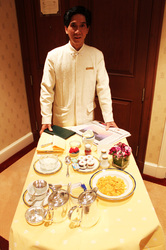











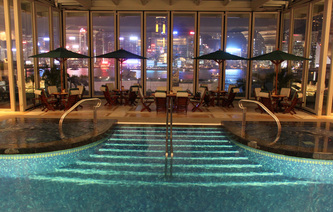
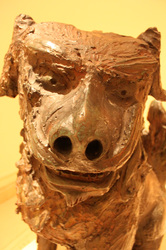


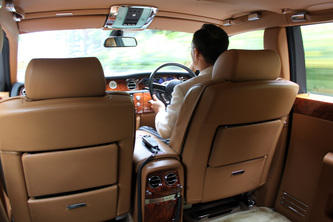















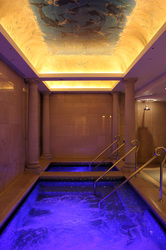
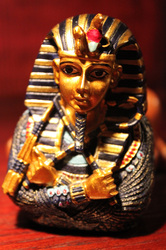



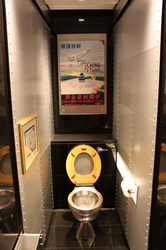
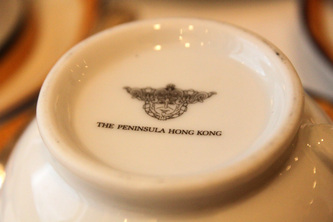



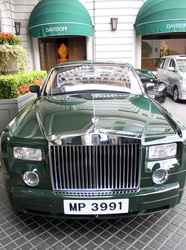


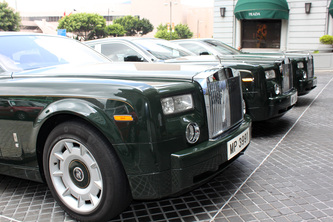




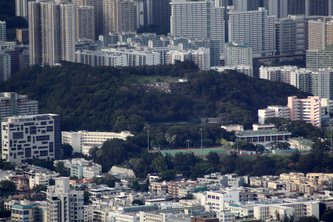

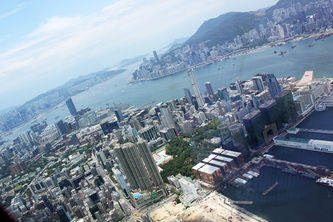

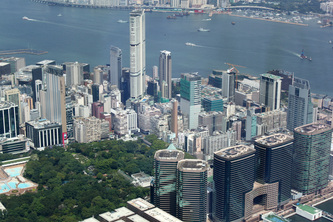








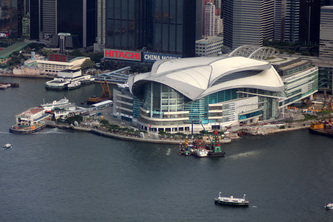


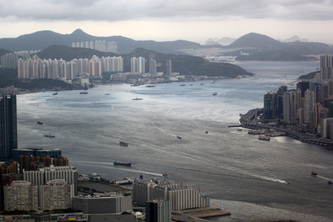








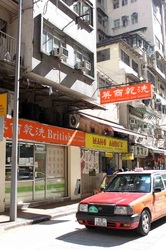



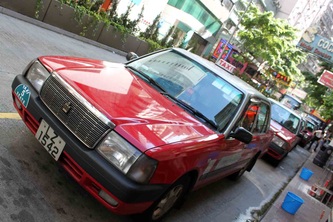








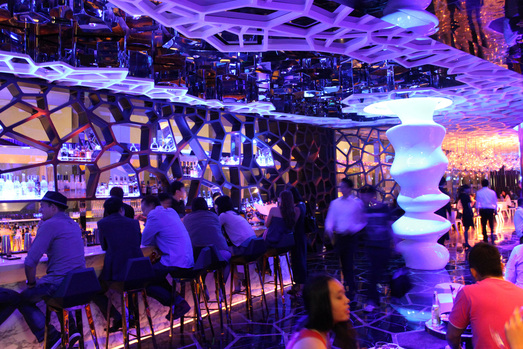












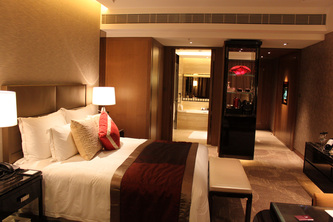













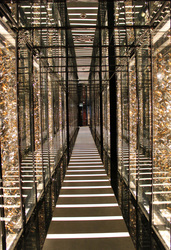

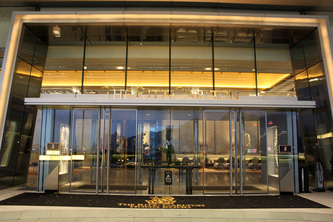

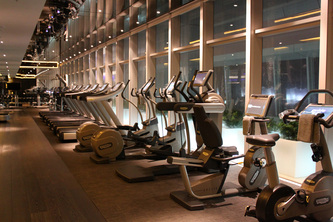
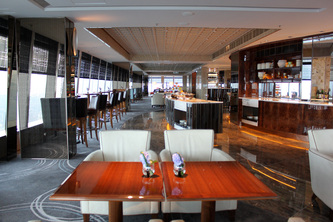






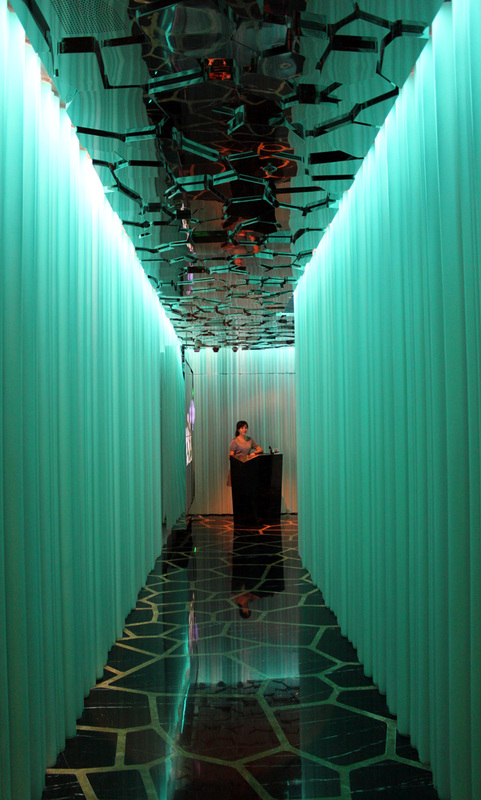
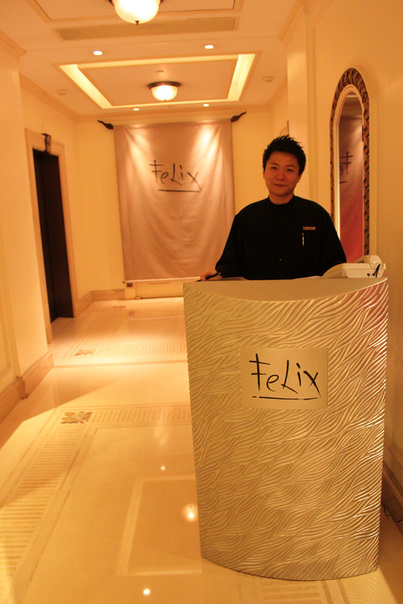











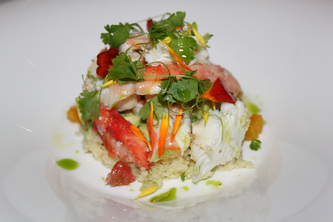





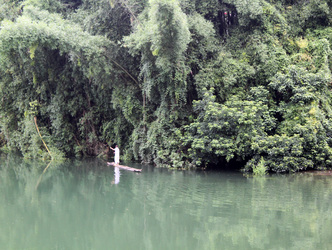











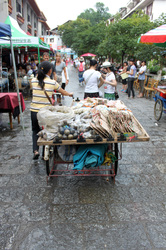

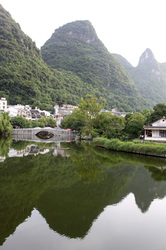




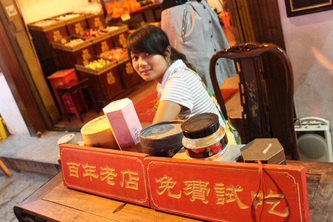
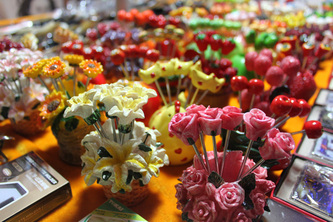


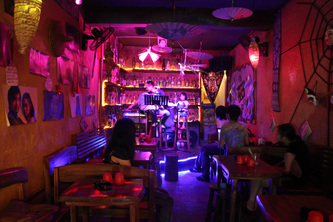
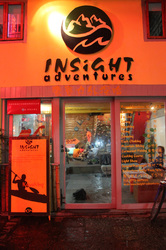
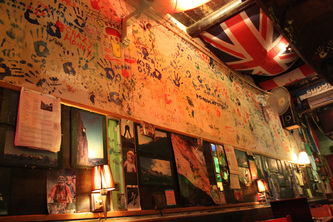








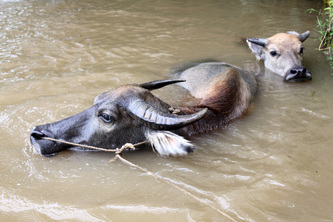
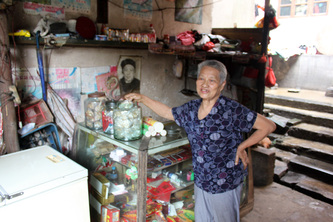

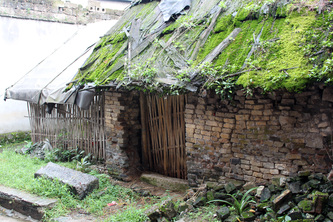

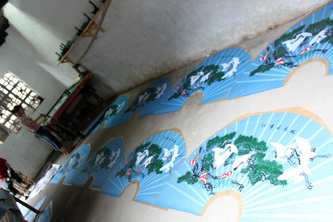



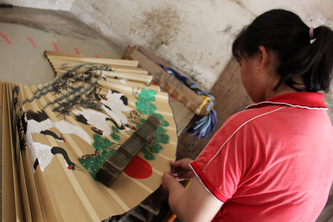







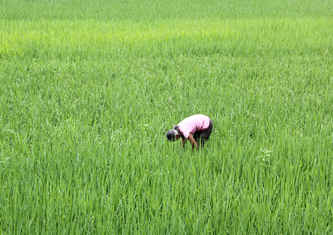



















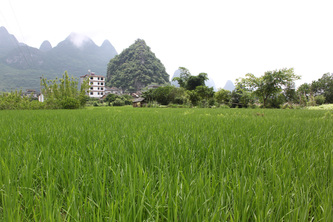







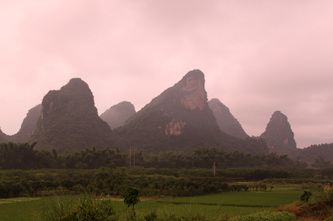
 RSS Feed
RSS Feed


